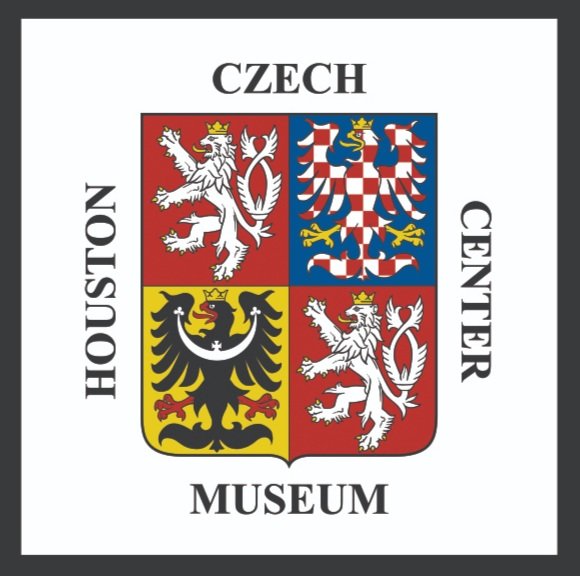The Czech National Revival, or Czech Renaissance, was a response to the governing bodyās dismissal of Czech culture and identity. Nobility and radicals pushed society to a state of nationalism, where institutions were established to celebrate Czech history and culture. The movement was influenced by Romanticism and the Industrial Revolution, and it had a dramatic impact on literature, language, history, and politics.
Background
Ceremonial laying of the foundation stone of the National Theatre, 1868
The movement began at the end of the 18th century when elites within the Czech intellectual sphere acknowledged the discontentment of Czech society due to increased Germanization imposed by the Hapsburg Emperors after the Battle of White Mountain in 1620. The state administration, church, and educational system utilized only the German language, and Protestants faced conversion attempts by the Catholic minority. As a result, the nobility, who maintained their sense of heritage, began to finance scholarly activities in the fields of Slavic language, culture, and history.
Josef ¶Ł“Ē²ś°ł“Ē±¹²õ°ģĆ½ and Josef Jungmann
Josef Jungmann and Josef ¶Ł“Ē²ś°ł“Ē±¹²õ°ģĆ½
Two prominent members of the nobility during this time included Josef Jungman and Josef ¶Ł“Ē²ś°ł“Ē±¹²õ°ģĆ½, who introduced the study of the Czech language in schools. ¶Ł“Ē²ś°ł“Ē±¹²õ°ģĆ½ published his Czech grammar book between 1834 and 1839 and Jungmann wrote the first dictionary of the Czech language āthe Czech-German Dictionaryā and became known as the founder of the modern Czech language.
Dobrovsky and Jungmann accomplished their goal of protecting the Czech language and using it to promote a stronger sense of national identity, and two national institutes opened: a chair for the study of Czech language and literature at Charles University in Prague in 1793 and the Bohemian Society of Sciences in 1784, which became the Royal Bohemian Society of Sciences in 1790.
A History of the Czech Nation in Bohemia and Moravia to 1526
Written by historian FrantiÅ”ek ±Ź²¹±ō²¹³¦°ģĆ½, the Geschichte von Bƶhmen, 5 vol. (1836ā67), and DÄjiny nĆ”rodu ÄeskĆ©ho (1848ā76), chronicle the nature of Czech history as āthe constant contact and conflict between the Slavs on the one hand and Rome and the Germans on the other.ā These works cemented the Hussite period as the central episode of Czech history. ±Ź²¹±ō²¹³¦°ģĆ½ is considered the founder of modern Czech historiography and was a major political figure of the nineteenth century. He became editor of the journal of the Bohemian Museum, where he published articles on aesthetics and the Czech language, starting in 1827. His political stance supported the Austro-Slavic conception of a federal Austria, composed of nationalities with equal rights. He influenced the liberal nationalism of TomĆ”Å” Masaryk and his generation.
Czech Literature
Božena ±·Ä³¾³¦“Ē±¹Ć”, Karel Hynek ²ŃĆ”³¦³ó²¹, and Karel ±į²¹±¹±ōĆıš°ģ
As the revival continued, scholars became interested in their countryās earlier literature and history. In response to the centralizing tactics of the Habsburg government under Empress Maria Theresa and the influence of the Romantic movement, Czech literature flourished. Some of the most prominent figures in the revival of Czech literature were novelist Božena ±·Ä³¾³¦“Ē±¹Ć”, Romantic poet Karel Hynek ²ŃĆ”³¦³ó²¹, and political columnist Karel ±į²¹±¹±ōĆıš°ģ. The MĆ”j circle was a school of writers in the second half of the 19th century who helped to create Czech literature with liberal and pragmatic nationalist aims. Drama began to thrive after the 1870s, and the National Theater opened in 1883.
Realist School
Led by Jan Gebauer in linguistics, TomĆ”Å” G. Masaryk in philosophy, and Jaroslav Goll in history, the school of realists sought a Czech identity based on reality, not a romanticized past. Due to their critiques of the authenticity of some āmedieval manuscriptsā that had been āfoundā in the 1860s, they were accused of being āanti-nationalists.ā The leadership of the movement shifted away from history and towards writers and journalists who favored the romanticized past of the chivalric period. Yet, Czech society began calling for greater freedoms and equality of nationality.
Industrial Revolution
Ostrava Vitkovice Steelworks
The growing industry resulted in an increase in Prague's Czech population as people moved to the city from the countryside. With the increased industrialization came the abolition of serfdom, a practice where unfree peasants were bought and sold with the land they lived on, in 1848. Unlike the industrial revolution in Great Britain, the Hapsburg dynasty was heavily dependent on the nobility, making them central figures in the National Revival and Industrialization. They modernized agricultural production, established a considerable food industry, and financed a variety of industries.
End
The beginning of the end of the Habsburg dynasty came with the assassination of Francis Ferdinand in 1914, an event that preceded World War I. With the end of the Great War in 1918, the Republic of Czechoslovakia was established, completing the National Revival movement.
Written By Jaime Johnston
Citations
Craig, Mary W. āThe Czech National Revival Movement.ā marywcraig, January 11, 2015. https://marywcraig.com/2015/01/11/the-czech-national-revival-movement/#:~:text=By%20the%2018th%20century%20the,society%20started%20the%20National%20Revival.
āFrantiÅ”ek ±Ź²¹±ō²¹³¦°ģĆ½.ā EncyclopƦdia Britannica, May 22, 2023. https://www.britannica.com/biography/Frantisek-Palacky.
Luebering, J. E. āThe 18th and 19th Centuries.ā EncyclopƦdia Britannica. Accessed May 22, 2023. https://www.britannica.com/art/Czech-literature/The-18th-and-19th-centuries.
My Czech Republic Team. āNational Revival to World War I.ā Czech National Revival and Industrial Revolution. Accessed May 22, 2023. http://www.myczechrepublic.com/czech-history/national-revival.html.
āOn the Industrial History of the Czech Republic.ā ERIH. Accessed May 22, 2023. https://www.erih.net/how-it-started/industrial-history-of-european-countries/czech-republic.






